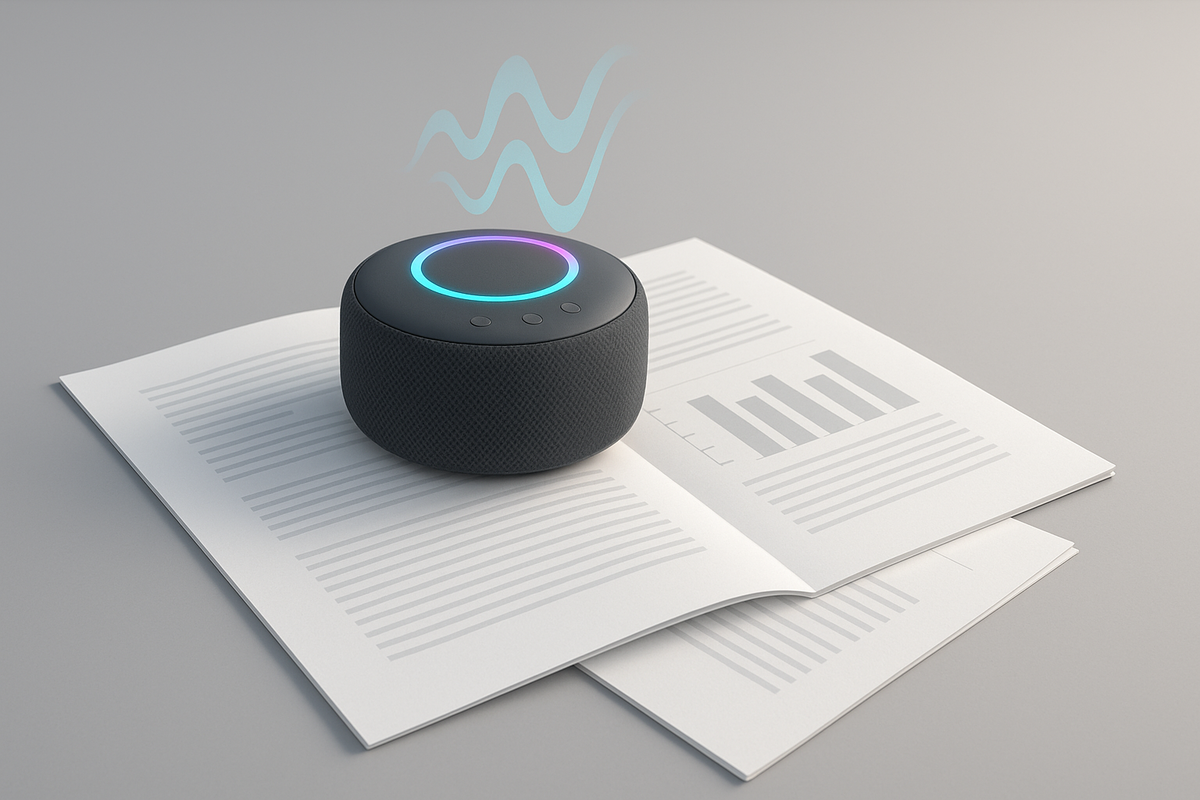B2B marketing has always thrived on long-form, research-driven content. Whitepapers, in particular, remain one of the most trusted formats for decision-makers seeking credible insights before investing in solutions. But as business professionals become increasingly time-constrained and voice technology goes mainstream, a new question arises: Will whitepapers evolve from static PDFs into voice-activated, conversational experiences?
The rise of smart assistants like Alexa, Siri, and Google Assistant—combined with AI-driven voice tech—is pushing the boundaries of how we consume information. For B2B marketers, this opens up an exciting frontier: voice-activated whitepapers that are accessible, interactive, and personalized.
Why Voice Matters in B2B Content
The adoption of voice technology is no longer limited to consumers asking Alexa about the weather. Enterprises are embedding smart assistants into workflows, customer service, and knowledge management. According to research, by 2026, nearly 40% of professionals are expected to use voice assistants for work-related tasks.
For busy executives, reading a 20-page PDF is often impractical. Voice-activated whitepapers offer:
-
Hands-free learning – Listen to industry insights during commutes or between meetings.
-
Faster information retrieval – Ask specific questions and get answers without scrolling.
-
Accessibility – Break down barriers for professionals who prefer auditory learning or have visual impairments.
From Static PDF to Conversational AI
Traditional whitepapers are downloaded as static documents, often forgotten after a skim. But with voice activation, they could transform into dynamic, AI-powered conversations. Imagine this scenario:
-
A CMO downloads your whitepaper and uploads it to Alexa.
-
Instead of reading, they say: “Alexa, summarize the key findings from the section on customer acquisition.”
-
The assistant responds with a curated audio summary, personalized to the user’s query.
-
The executive can then ask follow-up questions, diving deeper into case studies or statistics.
This shift from passive reading to interactive learning could redefine how B2B buyers engage with research-heavy content.
Benefits for Marketers
For B2B marketers and brands, voice-activated whitepapers open several new opportunities:
-
Extended Reach – Capture professionals who consume content on the go.
-
Enhanced Engagement – Move from one-way content delivery to two-way interaction.
-
Data Insights – Track which sections users ask about most, helping refine future content.
-
Personalized Experiences – AI can adapt the narrative based on industry, role, or buyer stage.
This personalization turns a whitepaper from a generic document into a dynamic sales enablement tool.
Challenges Ahead
Of course, this evolution isn’t without hurdles.
-
Standardization – There’s no common format yet for voice-ready whitepapers.
-
Complexity of Content – Not all technical content translates seamlessly into audio.
-
Privacy Concerns – Enterprises may hesitate to allow smart assistants access to proprietary data.
Yet, these challenges mirror those faced during the early days of eBooks and mobile content. With innovation, adoption will follow.
The Future of B2B Whitepapers
As AI and natural language processing improve, whitepapers could become conversational micro-learning hubs. Instead of flipping through pages, executives might say:
-
“Explain the ROI model from this report.”
-
“Compare this solution with last year’s benchmarks.”
-
“Email me the chart on revenue growth.”
Such interactions not only save time but also embed whitepapers directly into business decision workflows.
Conclusion
The question isn’t whether whitepapers will evolve—it’s how fast. Voice-activated content is no longer science fiction; it’s becoming a business reality. For B2B marketers, the opportunity is clear: adapting whitepapers for smart assistants can turn static PDFs into living, breathing conversations with buyers.
The brands that embrace this shift early won’t just distribute content—they’ll build lasting relationships through interactive, voice-driven experiences.

